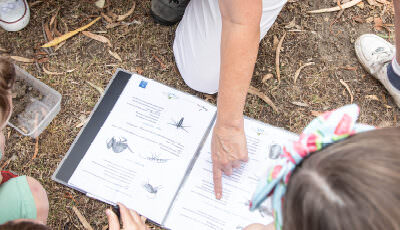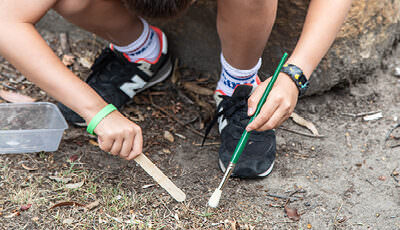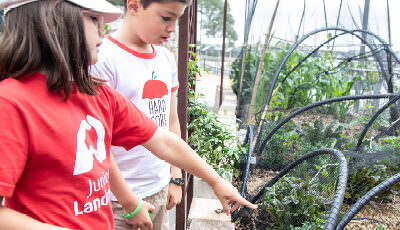
Creating a beneficial garden: assessment
Time Allocation: 30 - 40 minutes*
Activity Level: Moderate
Introduction
We’re going on a bug-hunt! A ‘bug’ is the broad term given to an invertebrate animal (animals without a backbone). Many different invertebrates visit gardens, or call them home. In this activity, you will be completing an assessment of the types of invertebrate in the garden. They could range from worms that break down organic matter, to bees that pollinate flowers, or even pest animals that eat crops, such as snails and slugs. This activity is designed to provide the knowledge and tools for other learning activities in this sequence.
*Time allocation will be dependent on site selection and travel time.
Checklist
Instructions
 Step 1
Step 1
Why do invertebrates matter?
Discuss the term invertebrate and how it describes animals without a backbone.
Discuss the important roles that they play in the garden. Some invertebrates, such as worms are detritivores and they break down material and recycle nutrients.
Insects such as bees, and even flies, play an important role in pollination. As pollinators, bees carry pollen from flower to flower to help the flowering plants make seeds, reproduce and make new plants. Bees help to grow our food. Without pollinators such as bees, animals and humans would be without seeds, nuts and fruits to eat.
Other invertebrates, such as spiders, are important predators and help to keep the garden ecosystem in balance.
Discuss the invertebrates that the children know about and the roles they may play as decomposers, pollinators and as a food source for insectivores.
 Step 2
Step 2
Examine your chosen field guide with the children (device or printed version) prior to exploring outside. Point out an invertebrate that they are likely to observe, such as a bee, and model how to use the field guide. Discuss the role that the bee may play in the garden.
Outline safety aspects to the children, when observing invertebrates:
- be gentle and quiet observers; do not touch any of the invertebrates.
- instruct how to use the garden trowels, spoons, paddle sticks or paintbrushes.
- guide the children to tread lightly, taking care not to stand on anything living while exploring.
- ask the children to return things back to how they found them, e.g. turned rocks or logs.
 Step 3
Step 3
Head outside to your observation site. Invertebrates are everywhere but finding a spot near a garden bed or away from asphalt will allow children the opportunity to do some light digging.
Allow children time for ‘slow looking’ in a micro environment. Encourage the children to explore the site, carefully looking at different locations using their senses to lead them.
Carefully look at flowers to see if there are any active bees or other flying insects. Use the trowels or spoons to gently turn over the topsoil, bark, small rocks and leaf litter looking for ground dwelling invertebrates such as snails, worms or millipedes. Using the paddle sticks or paintbrushes, attempt to move the insects into the plastic container for observation.
 Step 4
Step 4
If the children are successful at spotting an invertebrate, see if they can identify it using their field guide.
Show the children how to use visual cues, such as how many legs the invertebrate has, to help classify them.
You might like to take photos to capture your observations.
Model how to use the activity sheet to record the data and how the data can be displayed in a graph.
You will be able to refer back to the data from this assessment during the other activities in this activity sequence.
Use the activity sheet to encourage the children to make careful observations and thoughtful interpretations during and after the activity.
Extension Activity
Use Information Computer Technology (ICT) programs such as Excel to display your data in different types of graphs. Share it on your organisation’s communications platform.
Time your invertebrate activity to run during a local community celebration. It’s a great way to celebrate together and get people involved in finding and learning about invertebrates. Celebrate Landcare Week at the start of August!